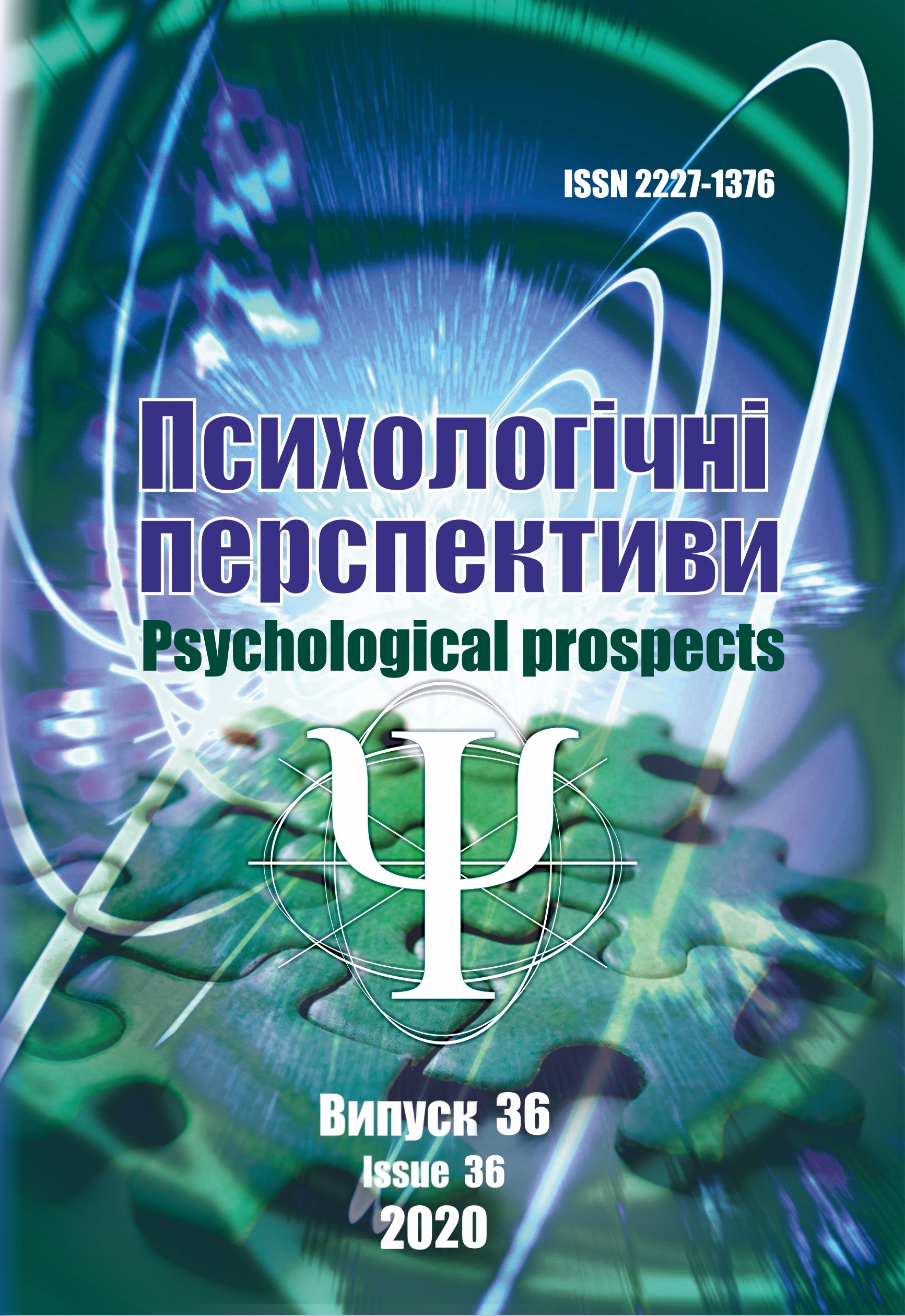Religious news as a form of mass communication: psychological markers
DOI:
https://doi.org/10.29038/2227-1376-2020-36-113-123Keywords:
online religion, religious communications, psycholinguistics, psychology of news, LIWC 2015Abstract
Purpose. The purpose of the article is to empirically determine the main psychological markers of religious news. Methods. To achieve the goal of the study, we used computer software Statistica 12 and Linguistic Inquiry and Word Count (LIWC2015). Research materials were news of the largest churches in Ukraine (Orthodox, Catholic, Protestant). All information messages for the period from 27.11.-03.12.2020. In total, 43 information messages were analyzed. Results. Prepositions, conjunctions and pronouns dominate among all categories of stylistic words. The analysis of religious news showed that most of the text concerns spatial connections (7.03%), motivators (drivers) that motivate actions (5.99%), cognitive processes (4.74%), society and social processes (2.96%), affiliation (2.17%), religious terminology (2.08%). The words "Ukrainian", "church", "temple" are most often used in religious news. The content of the news is often about celebrating significant dates or commemorating, and so on. This fact confirms the frequent use of the words "year" and "holidays". In general, religious messages call for unity, using the words "ours" and trying to unite people around Ukrainian identity. The words "authority" and "representative" are often used in religious news. Conclusions. Religious news carries out educational activities and social advertising of unity and mutual support. The unifying factors are not only the common faith, but also one nation and overcoming difficult times for the whole audience (in particular, the Covid-19 pandemic). Religious news has a great cognitive complexity of the text. Messages evaluate and discuss the present, no predictions for the future. A cross-cutting feature of all messages is the appeal to church involvement, calls to prayer and reading of religious literature. Modern religious news often mentions public authorities, emphasizing their authority.References
Abbott, J.Y. (2011). Writing the news: A comparison of objective, religious, and political opinion presses. Journalism, 12 (3), 349-365. DOI: https://doi.org/10.1177/1464884910388222
Bronstein, M.V., Pennycook, G., Bear, A., Rand, D.G., Cannon, T.D. (2019). Belief in Fake News is Associated with Delusionality, Dogmatism, Religious Fundamentalism, and Reduced Analytic Thinking. Journal of applied research in memory and cognition, 8 (1), 108-117. DOI: https://doi.org/10.1016/j.jarmac.2018.09.005
Carignan, M.E., Marcil-Morin, S. (2018). Canada Transmediality as News Media and Religious Radicalization. Global convergence cultures: transmedia earth (121-139). Routledge Advances in Internationalizing Media Studies.
Gervais W.M., Norenzayan A. (2012). Analytic Thinking Promotes Religious Disbelief. Science, 336 (6080), 493-496. DOI: https://doi.org/10.1126/science.1215647
Hart, R.P., Turner, K.J., Knupp, R.E. (1981). A rhetorical profile of religious news - time, 1947-1976. Journal of communication, 31 (3), 58-68. DOI: https://doi.org/10.1111/j.1460-2466.1981.tb00428.x
Hinrichsen, M., Boomgaarden, H., De Vreese, C., Van der Brug, W., Hobolt, S.B. (2012). Priming religion: The effects of religious issues in the news coverage on public attitudes towards European integration. Communications-european journal of communication research, 37 (1), 29-54. DOI: https://doi.org/10.1515/commun-2012-0002
Nassar, R. (2020). Framing Refugees: The Impact of Religious Frames on US Partisans and Consumers of Cable News Media. Political communication, 37(5), 593-611. DOI: https://doi.org/10.1080/10584609.2020.1723753
Mostafazadeh-Bora, M., Zarghami, A. (2017). Breaking and Sharing Bad News in End of Life: The Religious and Culture Matters. Journal of religion & health, 56 (5), 1655-1657. DOI: https://doi.org/10.1007/s10943-016-0249-0
Pennebaker, J.W., Boyd, R.L., Jordan, K., & Blackburn, K. (2015). The development and psychometric properties of LIWC2015. Austin, TX: University of Texas at Austin.
Pennebaker, J. W., & King, L. A. (1999). Linguistic styles: Language use as an individual difference. Journal of Personality and Social Psychology, 77(6), 1296–1312. https://doi.org/10.1037/0022-3514.77.6.1296
Pennebaker JW, Chung CK, Frazee J, Lavergne GM, Beaver DI (2014). When Small Words Foretell Academic Success: The Case of College Admissions Essays. PLoS ONE 9(12): e115844. DOI: https://doi.org/10.1371/journal.pone.0115844
Report on the network of religious organizations in Ukraine as of January 1, 2019. URL: https://risu.org.ua/ua/index/resourses/statistics/ukr_2019/75410/
Savage S. В. (2013). Head and heart in preventing religious radicalization. In Head and Heart: Perspectives from Religion and Psychology. F.Watts, G. Dumbreck (eds.), 157-194. Philadelphia: Templeton Foundation Press.
Tausczik, Y. R., & Pennebaker, J. W. (2010). The Psychological Meaning of Words: LIWC and Computerized Text Analysis Methods. Journal of Language and Social Psychology, 29(1), 24–54. https://doi.org/10.1177/0261927X09351676
Thomson, R.A. Park, J.Z. Kendall, D. (2019). Religious Conservatives and TV News: Are They More Likely to be Religiously Offended? Social problems, 66(4), 626-644. DOI: https://doi.org/10.1093/socpro/spy024
Zasiekin, S., Bezuglova, N., Hapon, A., Matiushenko, V., Podolska, O., & Zubchuk, D. (2018). Psycholinguistic Aspects of Translating LIWC Dictionary. East European Journal of Psycholinguistics, 5(1), 111-118. DOI: https://doi.org/10.5281/zenodo.1436335
Downloads
Published
Issue
Section
License
Copyright (c) 2020 Natalia Kostruba

This work is licensed under a Creative Commons Attribution-NonCommercial 4.0 International License.






